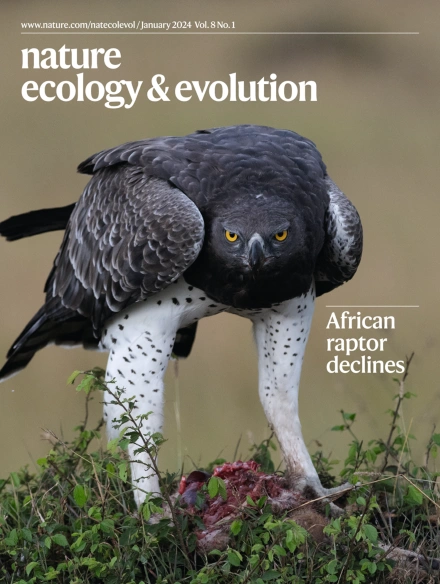A timetree of Fungi dated with fossils and horizontal gene transfers.
IF 13.9
1区 生物学
Q1 ECOLOGY
引用次数: 0
Abstract
Dating the tree of Fungi has been challenging due to a paucity of fossil calibrations and high taxonomic diversity of the group. Here we reconstructed and dated a comprehensive phylogeny comprising 110 fungal species, utilizing 225 phylogenetic markers and accounting for across-site compositional heterogeneity in amino acid sequences. To address uncertainties in fungal dating, we sampled chronograms from four relaxed molecular clock analyses, each integrating distinct sets of calibrations and relative time-order constraints. The first analysis used a core set of 27 calibrations alongside 17 relative constraints derived from fungi-to-fungi horizontal gene transfer events. Three further analyses extended this core set with additional timing information identified in our reevaluation of the evolution of pectin-specific enzymes in Fungi. Our timetree, integrating analytic uncertainties, suggests older ages for crown Fungi (1,401-896 Ma) than recently reported, providing a minimum age for ancient interactions involving fungi and the algal ancestors of embryophytes in terrestrial ecosystems (1,253-797 Ma). This supports a protracted gap between the onset of these interactions and the rise of modern land plants. Altogether, our study provides a refined timescale for fungal diversification and a temporal framework for future investigations into early interactions involving fungi and the algal ancestors of embryophytes.通过化石和水平基因转移确定真菌的年代。
由于缺乏化石校准和该群体的高度分类多样性,确定真菌树的年代一直具有挑战性。在这里,我们利用225个系统发育标记,并考虑到氨基酸序列的跨位点组成异质性,重建了包括110个真菌物种的综合系统发育并确定了时间。为了解决真菌定年的不确定性,我们从四个宽松的分子钟分析中采样了时间图,每个分析都整合了不同的校准集和相对时间顺序约束。第一次分析使用了27个校准的核心集以及来自真菌到真菌水平基因转移事件的17个相对约束。三个进一步的分析扩展了这个核心集,在我们重新评估真菌中果胶特异性酶的进化过程中发现了额外的时间信息。我们的时间表,综合分析的不确定性,表明冠真菌的年龄(1,401-896 Ma)比最近报道的要老,提供了真菌和陆地生态系统中胚胎植物的藻类祖先相互作用的最小年龄(1,253-797 Ma)。这支持了在这些相互作用的开始和现代陆地植物的兴起之间有一个漫长的间隔。总之,我们的研究为真菌多样化提供了一个精确的时间尺度,并为未来研究涉及真菌和胚胎植物藻类祖先的早期相互作用提供了一个时间框架。
本文章由计算机程序翻译,如有差异,请以英文原文为准。
求助全文
约1分钟内获得全文
求助全文
来源期刊

Nature ecology & evolution
Agricultural and Biological Sciences-Ecology, Evolution, Behavior and Systematics
CiteScore
22.20
自引率
2.40%
发文量
282
期刊介绍:
Nature Ecology & Evolution is interested in the full spectrum of ecological and evolutionary biology, encompassing approaches at the molecular, organismal, population, community and ecosystem levels, as well as relevant parts of the social sciences. Nature Ecology & Evolution provides a place where all researchers and policymakers interested in all aspects of life's diversity can come together to learn about the most accomplished and significant advances in the field and to discuss topical issues. An online-only monthly journal, our broad scope ensures that the research published reaches the widest possible audience of scientists.
 求助内容:
求助内容: 应助结果提醒方式:
应助结果提醒方式:


